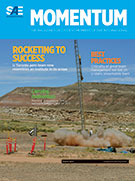Journal Article
A Study on Secured Unmanned Aerial Vehicle-Based Fog Computing Networks
2023-11-03
Abstract With the recent advancement in technologies, researchers worldwide have a growing interest in unmanned aerial vehicles (UAVs). The last few years have been significant in terms of its global awareness, adoption, and applications across industries. In UAV-aided wireless networks, there are some limitations in terms of power consumption, data computation, data processing, endurance, and security. So, the idea of UAVs and Edge or Fog computing together deals with the limitations and provides intelligence at the network’s edge, which makes it more valuable to use in emergency applications. Fog computing distributes data in a decentralized way and blockchain also works on the principle of decentralization. Blockchain, as a decentralized database, uses cryptographic methods including hash functions and public key encryption to secure the user information. It is a prominent solution to secure the user’s information in blocks and maintain privacy.







